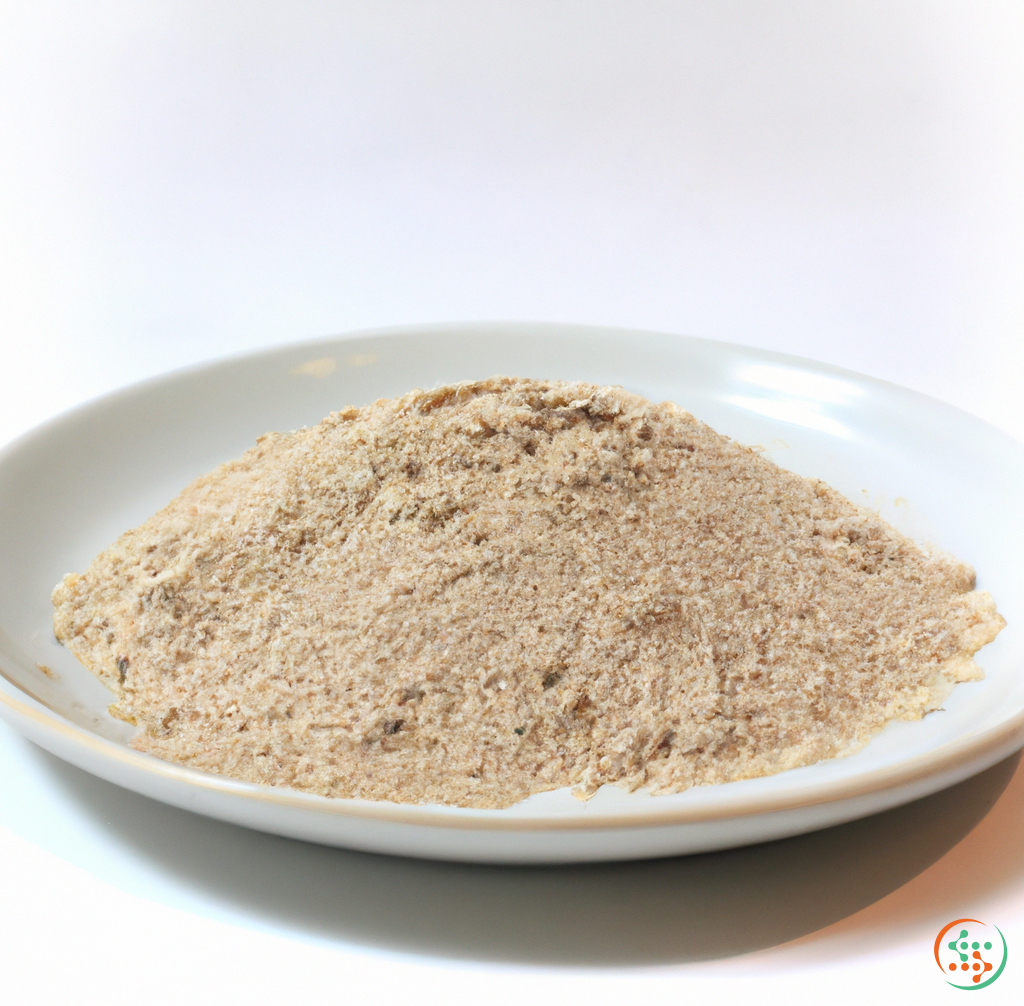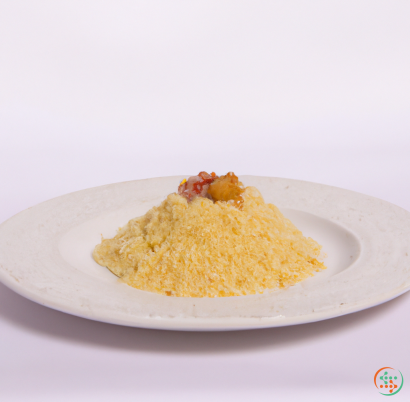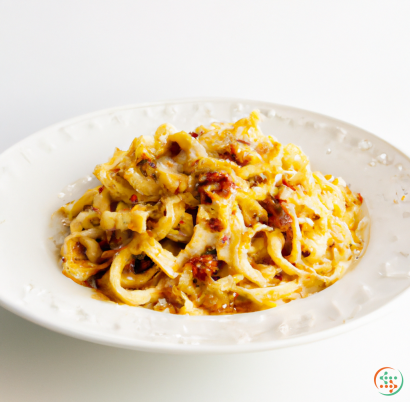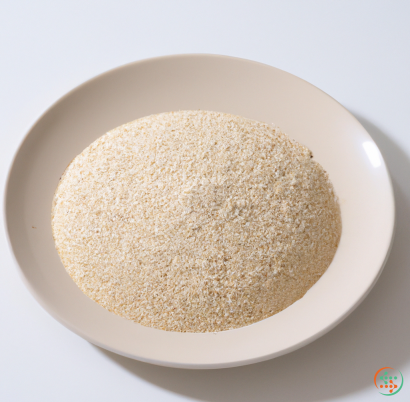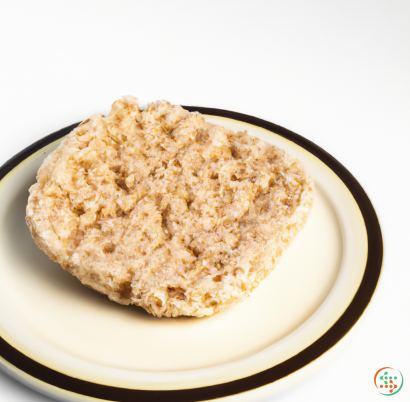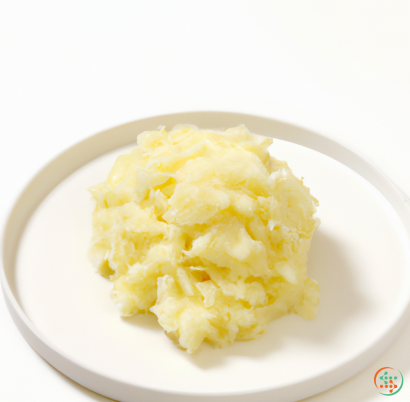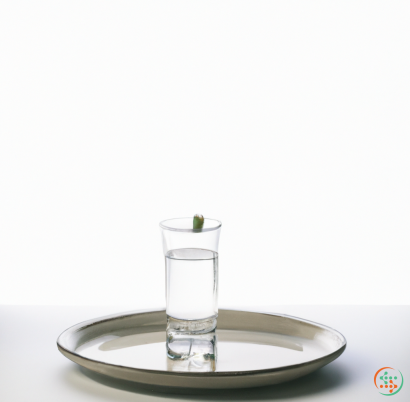Triticale Flour
What is Triticale Flour and What Health Benefits Does it Have?
Triticale flour is a lesser-known type of grain flour, a hybrid of wheat and rye that is gaining popularity among home cooks, health enthusiasts, and professional bakers alike. Made from a hardy and resilient grain, Triticale flour is packed with protein and dietary fiber, making it a healthy and flavorful alternative to traditional wheat flour. In this article, we’ll dive deeper into what Triticale flour is, its health benefits and nutritional value, and how to use it in baking and cooking.
What is Triticale Flour?
Triticale flour is made from a unique grain that is not commonly seen in the vegetarian and vegan food spaces. The grain itself is an hybrid of wheat and rye, combining the best qualities of each. The grain was formed in Scotland in the 18th century, when scientists sought to create a grain that had the same nutritional benefits as wheat with the added resilience of rye to withstand extreme temperatures, weather conditions, and other stresses. The name “triticale” reflects this union of two grains, as it comes from the Latin word for “three” and “grain.”
Triticale flour is a versatile ingredient that can be used in baking, cooking, and sometimes even eaten raw. It is light in color and has a mild flavor, so it works well in grocery items such as muffins, cookies, and crackers. The grain can also be sprouted, ground, and made into flour for baking or utilized as a breakfast cereal.
Nutritional Value
Just like its parent grains, Triticale is incredibly high in dietary fiber and protein, making it an ideal source of nutrition for those looking to increase their intake of both. It is also lower in fat and calories than wheat, so it’s a great choice for people who are looking to lose weight or maintain a healthier diet.
Triticale is also packed with minerals, vitamins, and antioxidants, making it one of the healthiest grains out there. It’s a good source of magnesium, which is crucial for helping to regulate blood pressure and developing healthy bones. It also supplies vitamins B1, B2, E, and K as well as important minerals such as zinc, copper, phosphorous, and manganese.
Finally, Triticale is also rich in essential fatty acids such as linoleic acid and alpha-linolenic acid, which are important for the body to stay healthy.
Health Benefits
In addition to its great nutritional value, Triticale also has a number of health benefits. First of all, it’s packed with dietary fiber, which is essential for proper digestion, as well as helping to reduce cholesterol and decrease the risk of cardiovascular disease. The protein content in Triticale also makes it a great choice for vegetarians and vegans looking to replace animal protein in their diets.
Triticale can also help to promote healthy blood sugar levels and reduce the risk of type 2 diabetes. The high fiber content helps to regulate the absorption of sugar in the bloodstream, preventing blood sugar spikes and crashes. Also, the vitamins and minerals found in Triticale can help to boost the immune system and provide a range of other health benefits.
Using Triticale Flour in Cooking
Triticale flour can be used in a variety of ways, from baking to cooking to even eating it raw. It can be a great replacement for wheat flour in a range of dishes, including breads, cookies, cakes, muffins, and more. It can be used as an alternative to breadcrumbs, as well as a thickener for sauces and gravies. The mild flavor of Triticale means it can be used in virtually any recipe without compromising the taste.
When using Triticale flour in baking, it’s important to keep in mind that the texture may be slightly different than that of wheat flour. It is generally denser and heavier than wheat, so it’s best to stick with tried and tested recipes. Triticale flour can also be used as a replacement for all-purpose flour, although it’s important to be aware that the measurements may need to be altered slightly.
Conclusion
Triticale flour is a nutrient-packed grain that is welcomed addition to any cooking or baking recipes. It is incredibly high in protein and dietary fiber, as well as essential vitamins and minerals that help the body stay healthy. Whether you’re a vegetarian looking to increase your protein intake or just looking for a tasty way to get more nutrients into your diet, Triticale flour could be just what you need. With its versatility and mild flavor, it’s a great ingredient to add to your cooking arsenal. Try it today and see what Triticale flour can do for you!
Triticale Flour: From Process to Plate
Triticale, a cereal grain and a hybrid of wheat and rye, has gained attention as a nutritional, newly-found ingredient in many meals due to its unique tastes, appealing texture, and variety of essential nutrients it provides. Flour made out of triticale is gaining a following and popping up in recipes, restaurants, bakeries, and more. Understanding the process and lifecycle of triticale flour and its journey from the farm to a dinner plate is a great way to appreciate the gravity of this food staple.
What is Triticale?
Triticale, Triticum x Secale, is a hybrid grain developed from a crossbreeding of wheat, most often durum wheat, and rye. This hybrid was created in Scotland in the late 1800s for the purpose of providing growers with a fast-growing grain that would carry the beneficial traits of both wheat and rye. The wheat aspect of triticale provides an increased nutritional value over rye, such as higher protein content and increased crop production. The rye aspect of triticale gives the resulting grain a vigorous growth habit and a more wide-reaching variety of uses. As such, triticale has been in use as a food source for around a century and its nutritional value continues to be discovered by consumers and chefs alike.
Triticale Flour
Triticale flour is made by grinding the grains of triticale into a fine powder. It has a finer texture than wheat flour, which can sometimes make it difficult to work with during baking. However, its unique flavor and distinctive texture make it well-deserving of its status as a popular flour in recent years. The end product is a smooth, malleable flour that produces a variety of delicious foods from cakes and cookies to breads and pizzas. Similar to other flours, triticale flour is gluten-free and can be used to create a variety of dishes.
The Production Process
The production process for triticale flour starts before it gets planted into the ground. There is a large variety of triticale available on the market, with many different traits and qualities to consider in order to pick the right variety of grain. To begin, farmers need to find a crop that will mature quickly and have a high yield of grains. Once the appropriate variety is chosen, the seeds are planted in the desired area, usually a field, early in the spring.
The plants take anywhere from 90-120 days for the grain to mature, and when it does, it is important for farmers to harvest the triticale grain before it starts to deteriorate in quality. This means that both acreage and yields must be managed efficiently in order to time the harvest in a cost effective way.
Once the harvesting is complete, the grains must be dried using mechanical dryers, as they must be presented at 13% moisture content in order to progress further in the production cycle. When the grains are dried and prepared, they are taken to a milling facility where they are split into three types: white triticale flour, brown triticale flour, and off-white triticale flour. Each type of flour is made under controlled heat in order to protect the quality of the grain.
At this stage, the triticale grain is ready to be milled into triticale flour. The milling process occurs in two steps: separation and grinding. In the separation process, the triticale grain is sorted and sifted through different sieves in order to separate the heavier particles from the lighter ones. This helps to achieve a consistent texture and produces a finer flour. In the grinding process, the sorted triticale grain undergoes a series of grinders and hammers to turn it into a fine powder, the triticale flour, which is the finished product.
Availability
Once the triticale flour is produced and packaged, it makes its way onto the shelves of grocery stores, niche markets, and bakeries for consumers to purchase. Many companies are also now producing gluten-free products containing triticale flour, and some companies manufacture everything from seasonal desserts to hearty breakfast foods and artisanal pizzas with triticale as the main ingredient. Because of its unique taste and texture, triticale flour is a perfect substitute in more traditional baking recipes and adds a unique flavor to any dish.
Nutritional Value
Triticale flour is packed with essential nutrients, vitamins, minerals and other health benefits. Triticale flour is high in protein, dietary fiber, magnesium and iron, and contains amounts of calcium, zinc, thiamin, riboflavin and niacin. Furthermore, it is a good source of complex carbohydrates and low in fats. Consuming triticale flour can provide a feeling of energy and fullness, assist in weight management, and help to regulate blood sugar levels.
On the Dinner Plate
When it comes to meal time, triticale flour is versatile and can be used in a variety of dishes. Baked goods such as muffins, pancakes, and cookies are perfect for showcasing the taste of triticale flour. For breakfast, try mixing some triticale flour in hot cereal for a nutty flavor and hearty texture. Additionally, triticale flour can be used to make homemade pasta or crunchy crackers.
Triticale flour is also a wonderful addition to entrée-style dishes. For a unique twist to your pizza dough, incorporate some triticale flour and top it with complementary ingredients such as walnuts and roasted peppers. Triticale flour is also an excellent replacement in stuffed pepper casseroles and is perfect for a healthy chicken parmesan alternative.
Conclusion
From its production to the dinner plate, triticale flour has become an essential part of many meals. Its unique flavor, texture, and nutritional value make it a great addition to any meal. As well, it has the added benefit of being relatively easy to incorporate into both sweet and savory dishes. Understanding the production process behind triticale flour and its journey to a delicious dinner plate is a great way to gain appreciation for this awesome ingredient.
| Vitamin E | 0.9 mg | |
| Vitamin B1 | 0.38 mg | |
| Vitamin B2 | 0.13 mg | |
| Vitamin B3 | 0.00286 grams | |
| Vitamin B5 | 0.00217 grams | |
| Vitamin B6 | 0.4 mg | |
| Vitamin B9 | 0.074 mg |
| Calcium | 0.035 grams |
Daily Value 1.3 g
|
| Iron | 0.00259 grams |
Daily Value 0.018 g
|
| Magnesium | 0.153 grams |
Daily Value 0.4 g
|
| Phosphorus | 0.321 grams |
Daily Value 1.25 g
|
| Potassium | 0.466 grams |
Daily Value 4.7 g
|
| Sodium | 0.002 grams |
Daily Value 2.3 g
|
| Zinc | 0.00266 grams |
Daily Value 0.011 g
|
| Copper | 0.56 mg |
Daily Value 0.9 mg
|
| Manganese | 0.00419 grams |
Daily Value 0.0023 g
|
| Tryptophan | 0.158 grams | |
| Threonine | 0.409 grams | |
| Isoleucine | 0.484 grams | |
| Leucine | 0.92 grams | |
| Lysine | 0.369 grams | |
| Methionine | 0.206 grams | |
| Cystine | 0.278 grams | |
| Phenylalanine | 0.644 grams | |
| Tyrosine | 0.387 grams | |
| Valine | 0.615 grams | |
| Arginine | 0.678 grams | |
| Histidine | 0.314 grams | |
| Alanine | 0.491 grams | |
| Aspartic Acid | 0.794 grams | |
| Glutamic Acid | 4.048 grams | |
| Glycine | 0.565 grams | |
| Proline | 1.196 grams | |
| Serine | 0.599 grams |
| Total Sugars | 0.131141 grams |
per 100g
|
| Caprylic acid (8:0) | 0.02 grams |
|
| Lauric acid (12:0) | 0.01 grams |
|
| Myristic acid (14:0) | 0.01 grams |
|
| Palmitic acid (16:0) | 0.24 grams |
|
| Stearic acid (18:0) | 0.03 grams |
|
| Total Saturated fatty acids: | 0.31 g | |
| Oleic acid (18:1) | 0.15 grams |
|
| Palmitoleic acid (16:1) | 0.02 grams |
|
| Gadoleic acid (20:1) | 0.01 grams |
|
| Total Monounsaturated fatty acids: | 0.18 g | |
| Linolenic acid (18:3) | 0.05 grams |
|
| Linoleic acid (18:2) | 0.74 grams |
|
| Total Polyunsaturated fatty acids: | 0.79 g | |
